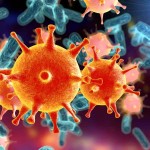Ebola Virus Disease(EVD)
26-09-2014 | 2119 View(s)
Ebola Virus Disease (EVD) also known as Ebola hemorrhagic fever(EHF) is one of the viral hemorrhagic fevers which affects a person's blood system It is a severe, often fatal illness in humans and non-human primates… Read more...
Eczema
30-09-2014 | 2008 View(s)
Eczema is often referred to as atopic dermatitis. The term eczema is broadly applied to a range of persistent skin problems. These symptoms include dryness and skin rashes that are characterized by one or more… Read more...
Endometriosis
30-09-2014 | 1975 View(s)
Endometriosis is the abnormal growth of cells (endometrial cells) similar to those that form the inside of the uterus, but in a location outside of the uterus. It can grow in the fallopian tubes, ovaries,… Read more...
Enteric Fever/ Typhoid
30-09-2014 | 1975 View(s)
Enteric fever, also known as typhoid, is a common worldwide bacterial disease caused by the ingestion of contaminated food or water which contain the bacterium Salmonella enterica enterica, serovarTyphi. It is very common in India.… Read more...
Epilepsy
30-09-2014 | 2210 View(s)
As per WHO, epilepsy is a chronic disorder characterized by recurrent seizures which may vary from a brief lapse of attention or muscle jerks, to severe and prolonged convulsions. The seizures are caused by sudden,… Read more...










